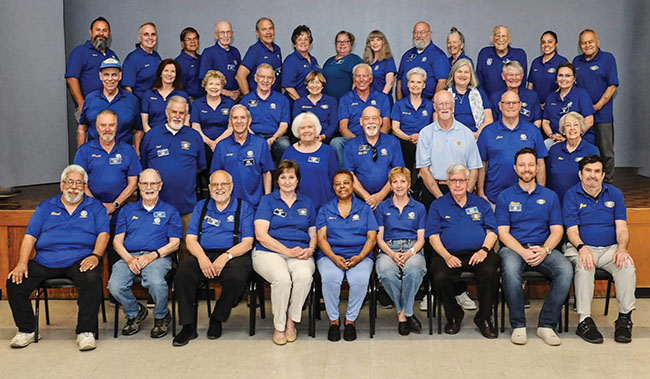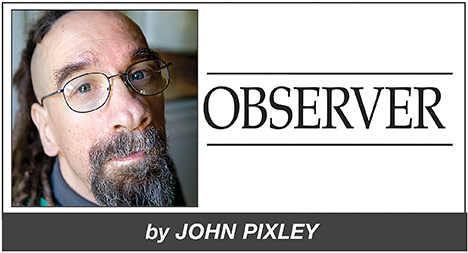City Council narrowly passes housing element update

Claremont City Council members with Claremont American Youth Soccer Organization Central United Girls 2008/2009 soccer team, winners of the SOCAL state cup championship. Players (L-R) include Leah Oseguera, Katie Truttman, Sarah Davies, Lily Arteaga, Keira Setvanich, Torie Bodley, Valentina Zurla, head coach Kimberly Moore, Lindsay Burr, Layla Mariscal, and Hudson Keeler. Not pictured are Natalie Castillo, Suriah Belcher, Olivia Serrano, Jordyn Alvidrez, Jazzlene Bravo Velazquez, Ava Aguiar, Julianne Poveda and Ariel Mendiola. Courier photo/Andrew Alonzo
by Andrew Alonzo | aalonzo@claremont-courier.com
After a four-hour discussion, the Claremont City Council on Tuesday approved an update to its sixth cycle housing element for 2021-2029 by a 3-2 vote.
The update not only amended Claremont Municipal Code to “replace existing [code] and add chapter 16.014 – housing opportunity site overlay, chapter 16.015 – ADU-ready RS 10,000 overlay, and amend chapter 16.081 – specific plan districts,” but also greenlit amendments to its general plan land use plan and land use element, as well as its zoning map, to make them consistent with the updated housing element.
Such changes included the addition of seven more housing opportunity sites beyond those included in the 2023 housing element update, according to the staff report. The council also found that the revised housing element and subsequent implementing actions were consistent with a previously certified final environment impact report.
The update was Claremont’s latest to its housing element, a component of its general plan, meant to inform the California Department of Housing and Community Development that the city is demonstrating compliance with state housing laws and playing its part to provide viable opportunity sites to meet state mandated housing growth targets.
Mayor Sal Medina and Council members Jed Leano and Jennifer Stark cast the three aye votes necessary to update the housing element, while Council member Ed Reece joined Mayor pro tem Corey Calaycay in voting no.
The same Council members voted 3-2 last year to approve the city’s 2023 housing element update which met the statutory requirements of state housing element law.

Active Claremont President Russ Binder addresses the City Council at Tuesday’s meeting after the nonprofit was recognized for its 30th anniversary. Courier photo/Andrew Alonzo
The 2023 motion also came with considerable caveats, including staff being directed to play ball with HCD to “look for other sites in north Claremont as alternatives to Sites 41 through 44” during the zone change process, and “redistribute density in north Claremont while including those sites at a lower density, which changes shall not cause a reduction to the total number of sites within the census tract.”
Moreover, staff and HCD had to “reduce the density of Site 40 [a proposed development site along 840 S. Indian Hill Blvd.] from RM 2000 to RM 4000, only bringing back these alternatives for future discussion if HCD conditionally approves those alternatives,” the staff report continued.
“HCD will not certify the update and bring the city into full compliance with housing element law until the rezoning of the HEU’s Opportunity Sites is completed,” Claremont Senior Planner Nikola Hlady wrote in an email Thursday.
In August 2023 Claremont staff introduced HCD staff to new zoning changes known as the accessory dwelling unit-ready RS 10,000 overlay concept and solicited feedback regarding opportunity site 40.
A revised draft of the housing element update, which included the ADU-ready overlay, was published on the city’s website and submitted to HCD at the beginning of this year. After some back and forth, in April the city received a letter confirming the revised housing element update complied with state law.
A public hearing on the update was held at the June 4 planning commission meeting, after which it was sent on to the council for approval, which came at Tuesday’s meeting.
As a city within the six county Southern California Council of Governments, Claremont is tasked with building 1,711 new housing units, its portion of the state allocated 1,341,827 RHNA number. Breaking it down, Claremont must build 556 extremely low-income units, 310 low income, 297 moderate income and 548 above moderate-income units by October 2029.
So, what’s in this latest update?
The only difference this time around was the inclusion of the ADU-ready RS 10,000 overlay, a significant zoning change that applies to 11 total opportunity sites, including the seven new sites added.
Hlady’s staff report on Tuesday explained the new zoning overlay would allow for “each of the lots to be subdivided pursuant to the lot sizes and dimensions of the RS 10,000 zoning district,” “each new lot to be developed with a single-family residence pursuant to RS 10,000 standards,” and “require that development on the lot includes an ADU that complies with local and state standards.”
The “Overlay approach allows for flexibility; owners may develop pursuant to underlying RR 35,000 standards,” according to the staff report. The city will “evaluate effectiveness of the Overlay at the end of 2026. If the City has not received/processed at least two applications, City will develop additional incentives and strategies (including rezoning) to promote development.”
State law requires in order for an opportunity site to be able to be considered eligible to support the potential development of affordable housing, sites must meet certain standards such as a lot being between 0.5 and 10 acres in size with the ability to accommodate 20 to 30 dwelling units per acre or at least 16 units overall.
Overall, the final opportunity sites map included 38 sites totaling approximately 75.75 acres.
The update includes seven more opportunity sites than what was adopted last year. New sites include five vacant lots along Dillard Avenue, Independence Drive, St. Gregory Street, Pomello Drive, and Yankton Avenue, and two similar lots along Miramar Avenue.
Two of the new sites, 46 and 47, are within a very high fire hazard severity zone as designated by the California Department of Forestry and Fire Protection. Heightened review requirements are in place for such developments and Claremont Community Development Director Brad Johnson added that a safety element review is in the works.
Reece took issue with opportunity site 46, a 0.8 acre vacant lot along Dillard Avenue, as it was situated in a very high fire hazard severity zone.
During deliberations, council member Stark asked if Reece’s vote was contingent on opportunity site 46 being removed from the plan. Reece said it was something he was taking it into consideration due to known factors such as the reduced setbacks on the lot, and the site’s proximity to the hillside and older surrounding homes.
Calaycay raised issue with funds being spent on a document for the state versus addressing local housing concerns. He also recognized that the city, in part due to its inclusionary housing ordinance, has done more to provide affordable housing in Claremont than the state has with its various laws.
“I’m not seeing how this process is necessarily making things more affordable,” said Calaycay, calling the update proceedings, “a process that’s getting us nowhere other than bullies threatening us saying ‘If you don’t adopt this, we’re going to punish you for it.’”
Calaycay and Medina shared the state is not giving the council a fair say in what gets built in Claremont.
Addressing Hlady, Calaycay added, “With the exception of builder’s remedy, all the other multifamily [housing] laws that you mentioned are all standalone and can go around this whole process anyway, so a property that’s not identified as an opportunity site is still potentially subject to the other laws that the state put in place that to a certain extent make this process irrelevant.”
Calaycay also claimed the process has sowed division with Claremonters in the northern and southern parts of the city. “It creates a lot of fighting, but at the end of the day it really comes down again to a willing property owner, potentially developer, and financing,” he said. “And another problem we have at the moment in time is the state is in severe financial straits, so where’s the financing going to come from?”
Medina said having some local control is better than having no say over what affordable housing is built in Claremont going forward.
Once approval from HCD comes down, the city will have a compliant housing element.










0 Comments